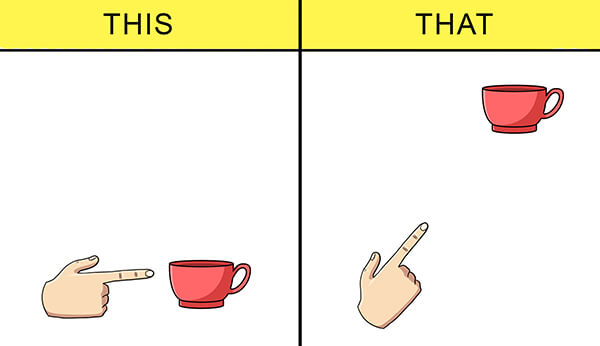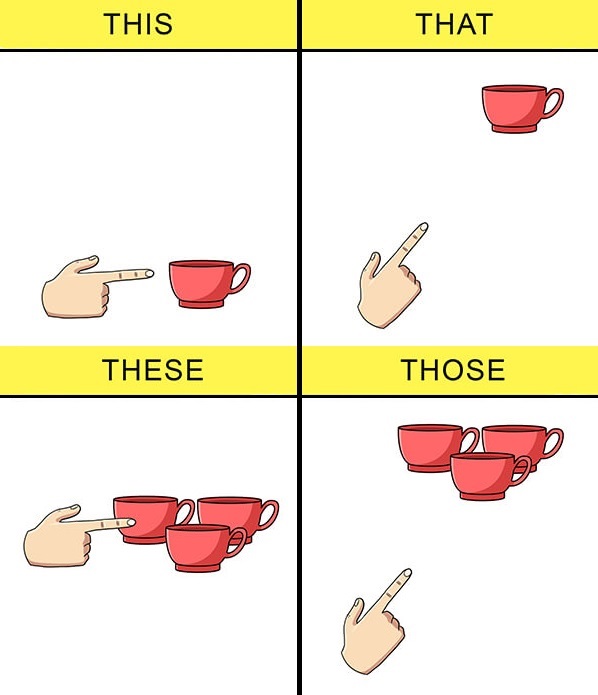Demonstrative Pronouns and "There is", "There are" Sentences
- 'this' and 'that' are for singular nouns, 'these' and 'those' are for plural nouns.
- 'this' and 'these' are for things near you, 'that' and 'those' are for things far from you.
- Use 'there is' for singular nouns and 'there are' for plural nouns to tell what is in a place.
We will learn about demonstrative pronouns and using "there is/are" to make simple sentences. Demonstrative pronouns are words that we use to point out specific things. These words are: this, that, these, and those.
Demonstrative Pronouns
'This' and 'that' are used for singular nouns. 'This' is used for something near us. 'That' is used for something far from us.

Examples:
-
This is my book.
You use 'this' because the book is near you. "This is my book" basically means "This = my book".
-
That is your pen.
You use 'that' because the pen is far from you. "That is your pen" basically means "That = your pen".
'These' and 'those' are used for plural nouns. 'These' is used for multiple items near us. 'Those' is used for multiple items far from us.

Examples:
-
These are my books.
You use 'these' because the books are near you.
-
Those are your pens.
You use 'those' because the pens are far from you.
Using "there is/are"
We use 'there is' for singular nouns and 'there are' for plural nouns. They help us make very simple sentences, like telling what is in a place.
Examples:
-
There is a book on the table.
You use 'is' because book is a singular noun.
-
There are pens in the box."
You use 'are' because pens is a plural noun.
Practice this topic with the AI English Tutor
AI English Tutor will teach you the grammar and practice it with you in a conversation format. Plus, 100+ practice questions on this topic to cement your understanding.
Try ALULA for free on your phone or tablet








Do you have any questions about this lesson? Ask in the comment section, below.